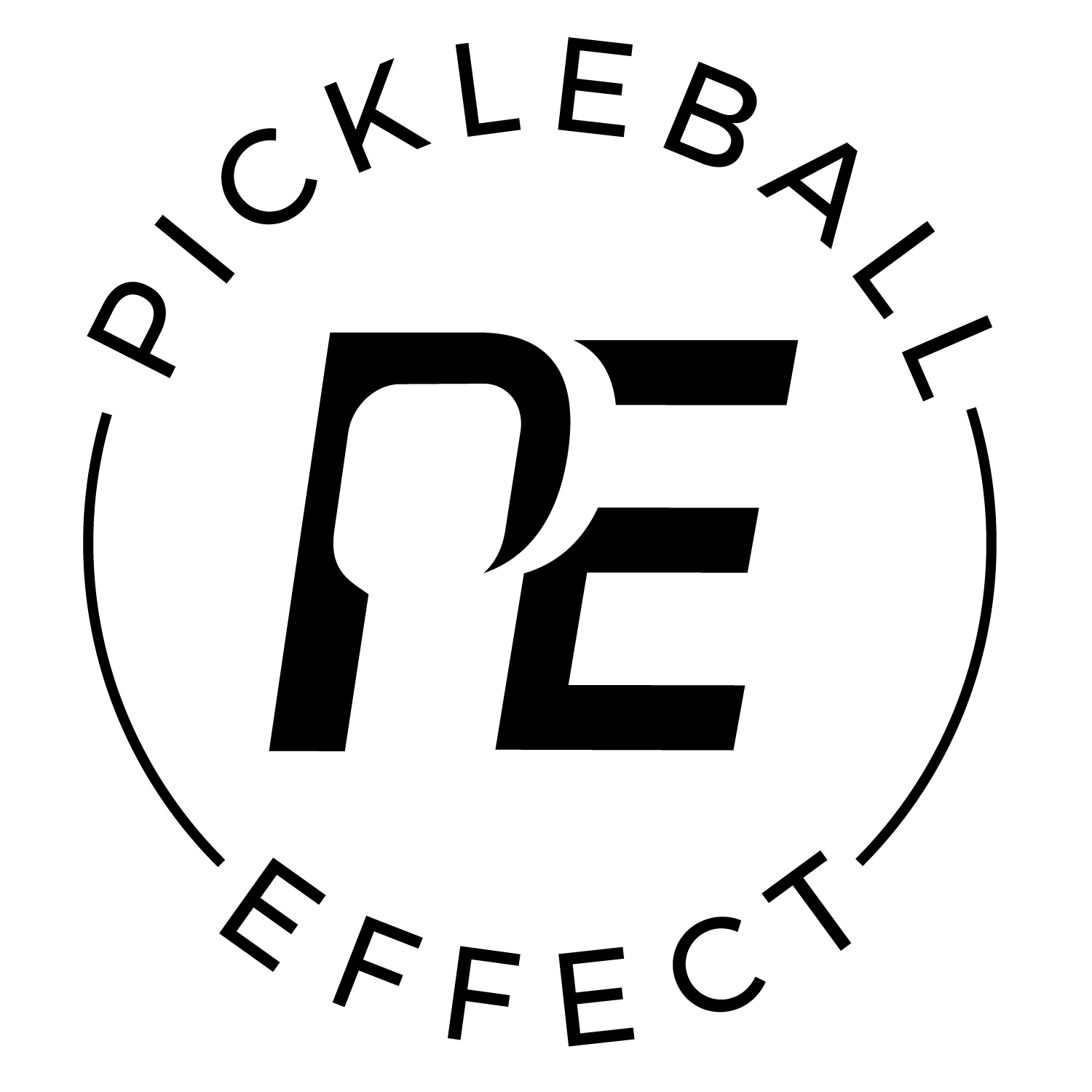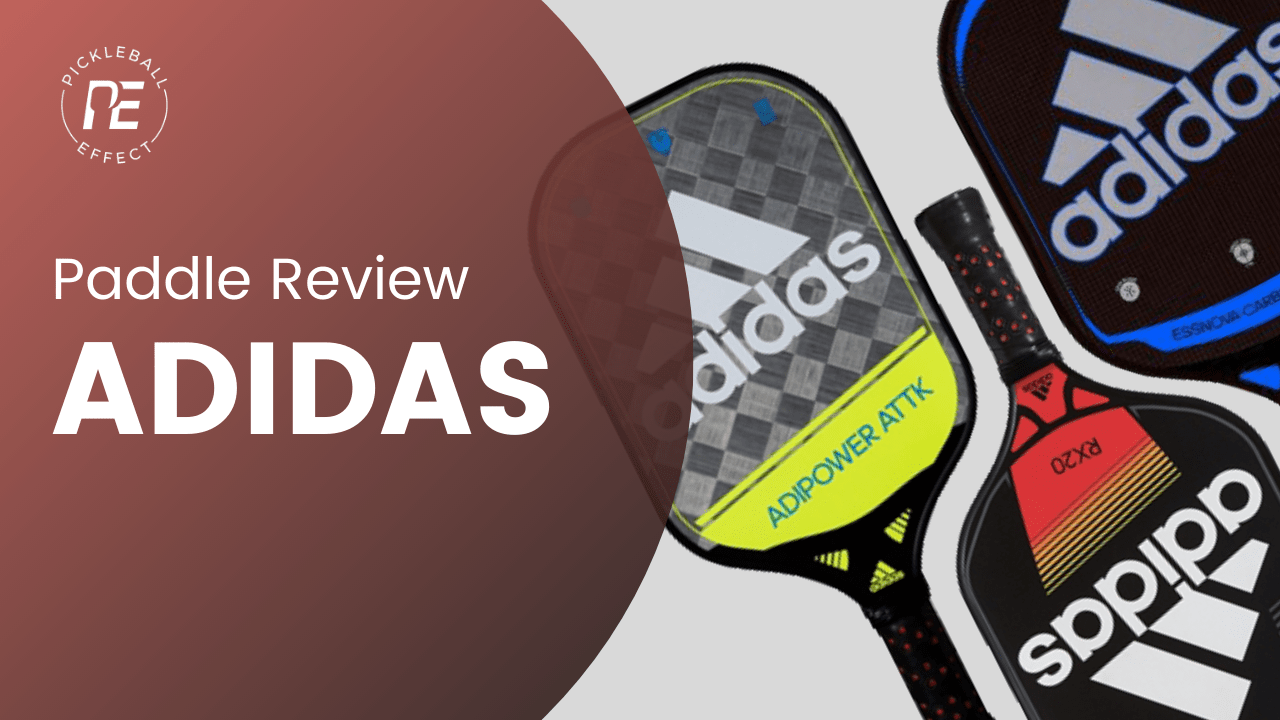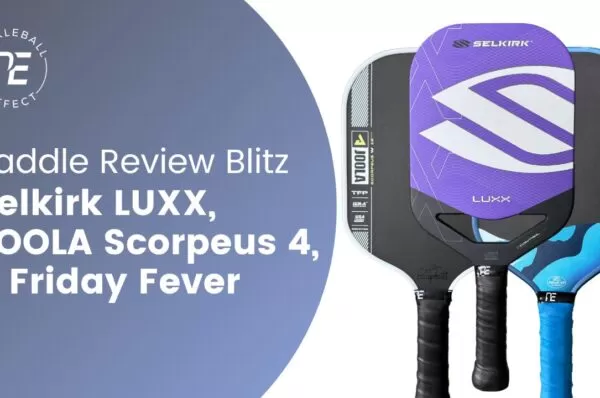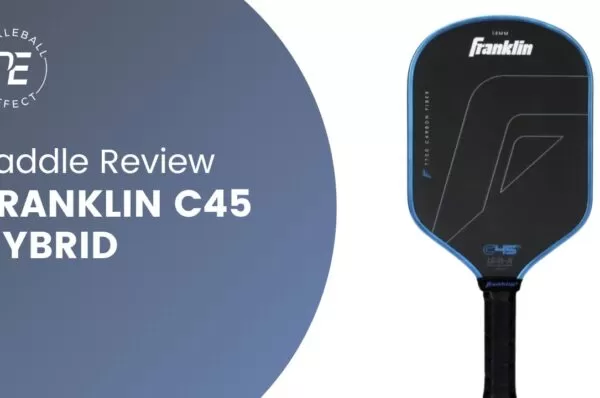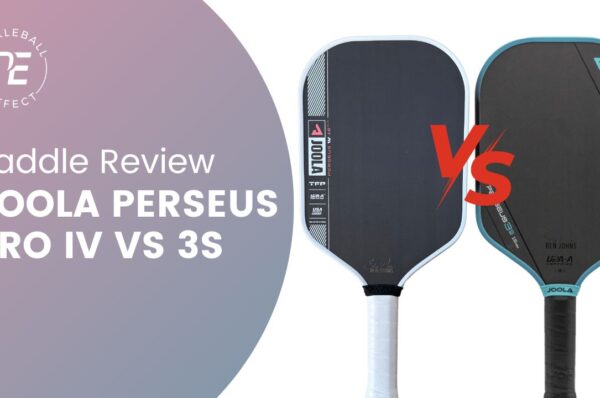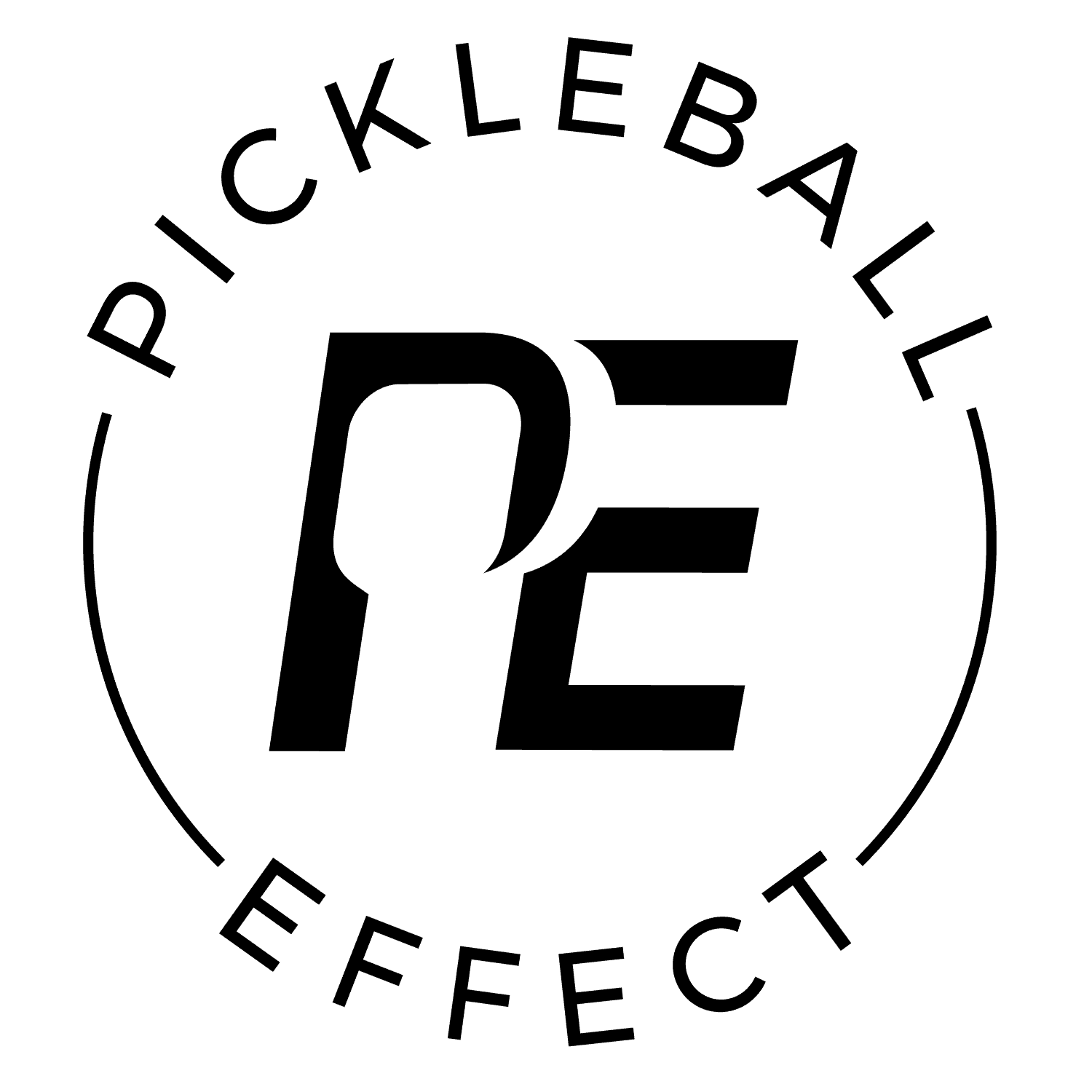adidas surprised the pickleball world and much of the sporting goods world when they launched eight pickleball paddles in 2021. This is no doubt the biggest brand to enter the pickleball paddle market. Their paddles consists of three separate lines and an entry level paddle. They have two performance level lines called ADIPOWER and ESSNOVA. Those are followed by an intermediate line they call the RX series and an entry level paddle called the DRIVE.
Because there are so many paddles, it’s hard to know which one is best for your game. I hope to make that easier for you with this review. After drilling and playing with the adidas paddles for several weeks, here’s my review of their performance.
adidas Paddle Technology
The adidas R&D team developed five foundational technologies that they mix and match in each paddle line. Different combinations of these technologies is what gives each paddle line and paddle its unique performance capabilities.
Paddle Core Options
Every paddle features a 14mm core that is either a high density or low density polypropylene honeycomb. The 14mm thickness is a neutral thickness that will give you more power than a thick core paddle at the sacrifice of a little control and stability.
High Density Core (HD): An HD core increases power on high speed shots. Designed for players with a high technical level. The HD core is the only core used in the ADIPOWER series and the ESSNOVA and RX paddles include an HD option.
From my play tests, the HD core has a solid feel to it that does generate more power than the Low Density Core if you have a high swing speed. If you have an average or slower swing speed, then they didn’t play with as much power as you’d expect. I thought the HD cores actually offered better control and feel in general.
Low Density Core (LD): An LD core provides greater ball feel and more comfort. The LD core is offered in the ESSNOVA series and in the RX series.
From my play tests, the LD core produced easier power with short swings and volleys. It didn’t quite produce as much power from the baseline as the HD did. Overall, the LD core offered more power for average to lower level players and felt a little softer off the face. Though, I thought the HD played more consistently making it a little easier to control.
Facing Layers
adidas uses three different facing layers. Each paddle series uses a different type. One thing that’s consistent across all three facing types are their smooth surface. None of the paddles have any sort of grit on them.
With the smooth face I found that I could still generate decent spin from the baseline with bigger swings. But when it came to small, compact swings like dinks and flicks the paddle didn’t grab the ball very well
ADIPOWER Series
24k Carbon Aluminized: This is a very stiff, high grade carbon with an thin layer of aluminum coated on top. The ADIPOWER series actually felt the softest to me and I think it’s because of this facing layer. Carbon is known for playing soft and aluminum, though it isn’t a common material, is known for being even softer. Combined, they offered a really comfortable feel that enables your soft game.
ESSNOVA Series
3k Carbon: 3k is not as stiff as 24k carbon, but it is still a high grade carbon fiber material. It also has great touch, but has a little more pop compared to the 24k carbon. In my playtest, I liked this facing layer the most. I thought it offered plenty of control but had a little more power to enable you offensively comparted to the 24k carbon used in the ADIPOWER paddles.
RX Series
Fiberglass: This material gives you a little more pop overall, but lacks consistency. The lack of consistency across the face actually made it harder to control. adidas advertises the RX paddles as the most player friendly and comfortable paddles, but I actually thought the ESSNOVA paddles fit that description better.
Try Our Paddle Fitting Quiz
Not sure what paddle to get? Take our paddle fitting quiz and we'll recommend three paddles that suit your game.
GET FITTED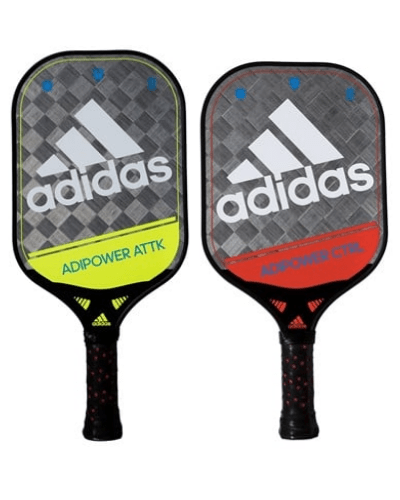
Price: $190
Combined Performance Rating
ADIPOWER ATTK & CTRL Performance Overview
The ATTK and CTRL models have the same core and facing material, but have different shapes. The ATTK is elongated while the CTRL is shorter and wider.
I thought these paddles had the softest feel and best control compared to the other paddles. The 24k Carbon Aluminized facing layer played a big role in that.
The ATTK model did offer more power than the CTRL, but it was less forgiving. The CTRL had a larger sweet spot and was more player friendly.
They both offered good power when you put a big swing on the ball with overheads and drives, but compact swings at the net didn’t generate as much power. This made counter attacks less effective but made blocking the ball and controlling the pace of play easier.
The thinner 14mm core made the paddles easier to maneuver. Usually, thinner cores like to twist a little with off center shots, but these felt more stable compared to other 14mm core paddles out there.
The bottom line: The ADIPOWER paddles were middle of the road in nearly all categories. They had a good feel and I could control the ball well, but I needed more power from them. They don’t generate good spin either, which was a downside for me.
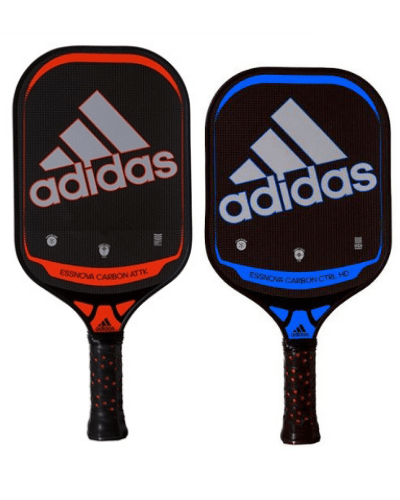
Price: $150
Combined Performance Rating
ESSNOVA CARBON ATTK & CTRL Performance Overview
The ATTK model is an elongated shape with a High Density core. The CTRL model has a wider body with the option of a High or Low Density core.
The ESSNOVA series offers the best balance of control and power out of all of adidas paddles. They had little more power than the ADIPOWER paddles but still had a good feel for the touch game.
The ATTK model did offer more power than the CTRL, but it was less forgiving. The CTRL had a larger sweet spot and was more player friendly.
Like all adidas paddles, these have a 14mm thickness which made them easy to maneuver. I also thought these felt more stable than your typical thinner core paddle.
The spin on these paddles just wasn’t there. This forced me to take speed off the ball when attacking at the net knowing I couldn’t generate the topspin I get from other brands.
The bottom line: The ESSNOVA paddles were my favorite of all of the adidas paddles. They gave me a little more power but still had a nice sense of touch and good consistency. They don’t generate good spin though, which was a downside for me.
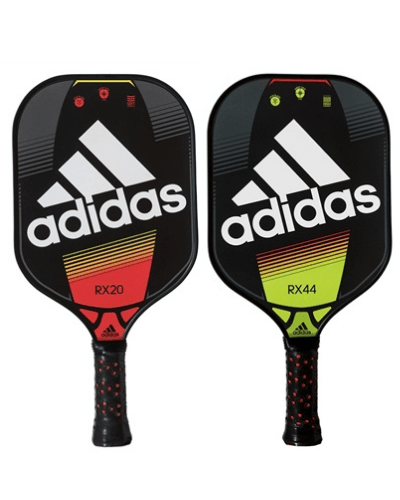
Price: $100
Combined Performance Rating
RX22 and RX44 Composite Performance Overview
Both of these models have the same wide body shape and smooth fiberglass surface. The only difference is in the core. The RX20 has the Low Density core and the RX44 has the High Density core.
The RX44 has a firmer feel to it compared to the RX20 and offered a little more power from the baseline. Both of these paddles have a little more pop than the other adidas paddles. It’s most noticeable with shorter swings at the net.
Like all adidas paddles, these have a 14mm thickness which made them easy to maneuver. These paddles didn’t feel as stable as the other models, though.
Again, the spin on these paddles just wasn’t there. This forced me to take speed off the ball when attacking at the net knowing I couldn’t generate the topspin I get from other paddles.
The bottom line: I wasn’t too impressed with the RX series. They felt very basic and cheap. I think there are better $100 paddles out there from brands like Franklin, Gamma and OneShot.
Final Thoughts
It’s great that adidas has entered the pickleball market, but I think they have some work ahead of them if they want to attract experienced players.
I thought they lacked innovation. Paddles with similar price points have unique selling values that adidas just doesn’t have. The ADIPOWER and ESSNOVA lines used high quality materials, but they were made with past paddle design approaches and were not forward thinking. Other brands like Selkirk, Gamma, OneShot, and Diadem are pushing towards the paddles of the future while adidas made a paddle of the past.
Additionally, they didn’t make it easy to pick a paddle. They have lots of paddle options that aren’t immediately clear what the differences are between them. I had to do a decent amount of research to understand their technology and how they used it to build their paddles. Something the daily buyer just isn’t going to do.
I’ve read other reviews of the adidas paddles, and most of them label them as bad paddles. I don’t think that’s true. They are high quality paddles, but I will say there’s nothing special about them that would make me want to buy them over other performance level paddles in the same price range.
Try Our Paddle Fitting Quiz
Not sure what paddle to get? Take our paddle fitting quiz and we'll recommend three paddles that suit your game.
GET FITTED
